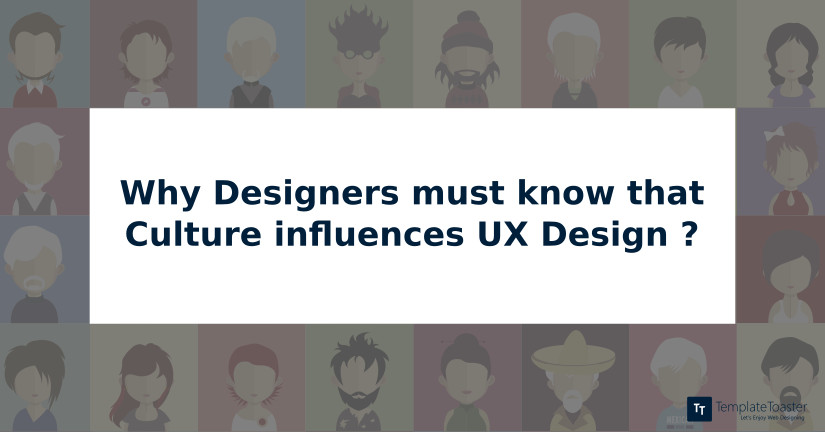Why Designers must know that Culture influences UX?

A good designer always designs with the end user in mind, which we now usually term as user-centered design meaning designing with empathy. However, when we design for a broader range of audience, a number of variables need consideration such as gender, age, education, etc.
We’re stitched and so should be our Designs
“We are the company we keep” or more precisely we are stitched by our society and the environment we live in. All of this comes down to realising that our audience can belong to a plethora of cultures which are so distinctive to each other that it is hard to find a culture neutral design. So, being designers it is important to know that the audience we are trying to build a product or a website for is influenced by some culture.
Eg. When we look at a website or an app, the first thing we see consciously or subconsciously is the colour or combination of colours used in the layout. Geographies perceive different colours differently. China takes yellow to be very nourishing and a symbol of royalty whereas for some parts of Europe it is a colour of cowardice.
Here at Templatetoaster web design software are some aspects of culture which must be considered when designing for a wider range of audience:
1. Language
Language is a system of communication and varies from geographies to geographies. While English is most commonly used, having a native language support or using some in between can also prove to be a good idea. It makes the audience feel closer to the context which adds to great UX. Although it is also necessary to thoroughly research before so that you don’t end up offending anyone.
[call_to_action color=”gray” button_icon=”download” button_icon_position=”left” button_text=”Download Now” button_url=”https://templatetoaster.com/download” button_color=”violet”]
Design responsive websites in 16 different languages within minutes using TemplateToaster
[/call_to_action]
2. Typeface
Typeface represents so much more than just text, it represents tone and vibe of the content. Eg. A typeface used in a Nike product page would be bold and aggressive as opposed to that in an orphanage website. So, knowing about what font family to use in accordance with the context and the type of audience is crucial.
3. Color
Different people deduce colour differently but when it comes to designing for a larger audience, personal colour preferences seem trivial in comparison to country colour preferences. Eg. Some countries perceive purple as the colour of mourning while others see it as the colour of royalty and luxury. So, while making a choice for your design’s colour theme, you might also wanna research the way your audience has been perceiving that colour.
You should also be very cautious when choosing a colour combination because you don’t know whom you might offend. Eg. If your colour combinations are similar to some country’s flag and they don’t already feel okay with it, you might offend some patriots.
4. Symbols
Symbols are a big part of a culture as it depicts a pictorial representation of something that they stand for or some following. Illustrations in your designs should be double checked so that they do not offend anyone from your target audience.
5. Values and norms
Values are culturally defined standards for what is considered as desirable and norms are an expected behaviour set pertaining to a culture. The context of your website or app should not be too out of bounds according to the values of your target audience.
Conclusion
User experience practices involve a number of steps and the one which takes up most of a UX Designer’s time is research. This research includes exploring competitor’s way of executing tasks, knowing users, etc. (for more on this see : The thought behind a thoughtful web design). This should also include research on cultures our audience follows and finding ways to accomplish culture neutral solutions. This is imperative because we are living in an era where for even the most trivial of issues we see people fighting passionately both for them and against them.
In the End
A user-centered design requires empathy to an extent of understanding not only their cultures but also their overall background.
So, the road to building a great UX involves factors beyond a user-centered approach, factors which are so personal that we can term it as “Persona-Centered Design”.
[call_to_action color=”gray” button_icon=”download” button_icon_position=”left” button_text=”Download Now” button_url=”https://templatetoaster.com/download” button_color=”violet”]
Best drag and drop interface to design stunning websites
[/call_to_action]
Web designers should read about the latest posts before designing.